
views
Explaining What Percentage Is

Relate percentage to everyday concepts. Students usually start learning percentage at around age 8-10, and quite a few will already have a sense of what the concept means. Ask students where they have encountered percentages in everyday life. For example, they might have gotten 100% on a test, or maybe they've seen a 50% off sale. Begin class by asking, "Where have you seen the word 'percent' before? What does it mean?" Come up with a list together. This can help you assess what students already know about percentage and what you need to cover.
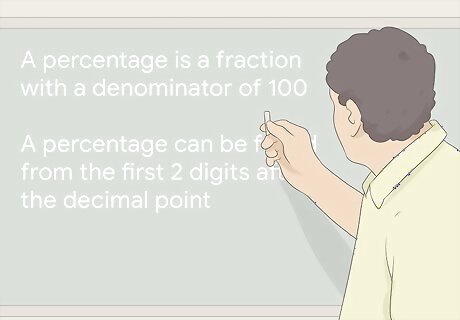
Explain that percent represents hundredths. A percentage is a fraction with a denominator of 100. Also explain that in decimal form, a percentage can be found from the first 2 digits after the decimal point. As long as you have already covered fractions and decimals, this will link percentage back to a familiar concept.

Use the concept of a century to explain percentage as parts of a whole. A century is a single unit of time, but within that unit, there are 100 years. This could be a useful way to help students conceptualize what the term means. This can be a useful strategy for students that are more linguistically-inclined learners rather than visual learners.
Using Visual Representations

Divide a square into a 10x10 grid. Create a grid with 10 rows and 10 columns to make a square with 100 spaces. You can use a digital version to demonstrate the concept to students on a screen and print copies for students to practice on their own. You can also find hundred chart templates online. This is a useful visual for introducing young students to the concept of percentage. You can also use circle charts to demonstrate percentages. EXPERT TIP Joseph Meyer Joseph Meyer Math Teacher Joseph Meyer is a High School Math Teacher based in Pittsburgh, Pennsylvania. He is an educator at City Charter High School, where he has been teaching for over 7 years. Joseph is also the founder of Sandbox Math, an online learning community dedicated to helping students succeed in Algebra. His site is set apart by its focus on fostering genuine comprehension through step-by-step understanding (instead of just getting the correct final answer), enabling learners to identify and overcome misunderstandings and confidently take on any test they face. He received his MA in Physics from Case Western Reserve University and his BA in Physics from Baldwin Wallace University. Joseph Meyer Joseph Meyer Math Teacher Use playful academic activities and games to build students' math skills. Visual aids such as models, diagrams, and real-world objects transform abstract concepts into something more relatable, promoting a deeper understanding. Interactive activities enhance a student's learning by making math fun and engaging.
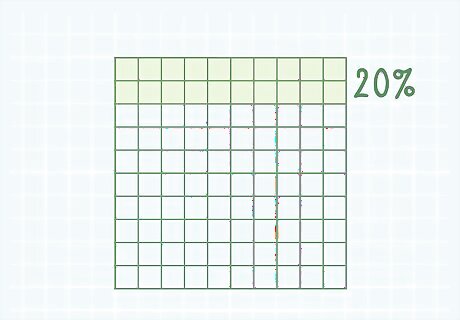
Ask students to create percentage artwork using the grid. Students color each square of a 10x10 grid to create their own unique artwork. Then, have them calculate the percentage of each color on their grid. For example, if a student colored 20 squares red, they would calculate that the grid is 20% red. Each square should only be one color. This is a good activity for reinforcing the concept of what percentage is for young students.
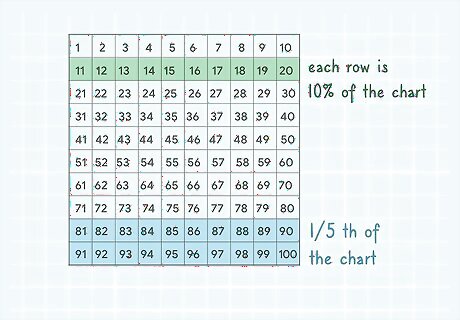
Use a hundred chart to convert between fractions, decimals, and percentage. Ask students how many squares they would have to color to fill in 50% of the chart. How do they know? Explain that each row is 10% of the chart, and ask them to convert that to decimal notation. Do some exercises to reinforce the links between fractions, decimals, and percentage. For example, ask the students to color .47 of the chart, or 1/4 of the chart and convert those numbers to percentages.
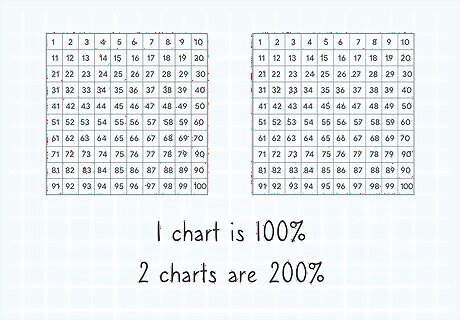
Double the grid to understand percentages over 100. Students may struggle to understand percentages over 100. Use 2 charts to explain the concept. If 1 chart is 100%, 2 charts are 200%. They will be able to visualize that 200% represents something doubling. Reinforce that 100%=1/1, so 200%=2/1.

Have students practice representing percents on a strip diagram. To create a strip diagram, or percentage bar, simply draw a long rectangle. Ask students to estimate where certain percentages fall on the bar. For example, have students draw a line in the middle to represent 50%. This format may be familiar to students who see it represented in battery power. For example, an iPad with 50% battery will show a rectangle half filled in. You can use this method to introduce the concept of how percent, decimals, and fractions are related.
Teaching Students Percentage Shortcuts
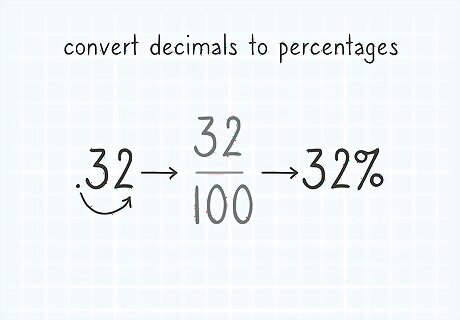
Have students quickly convert decimals to percentages. Students can convert decimals to percentages by moving the decimal point 2 spaces to the right. Demonstrate this by using an arrow to show the decimal point moving over. For example, show the students that .32 is the same thing as 32%. Have students convert a few decimals into percentages and vice versa on their own.
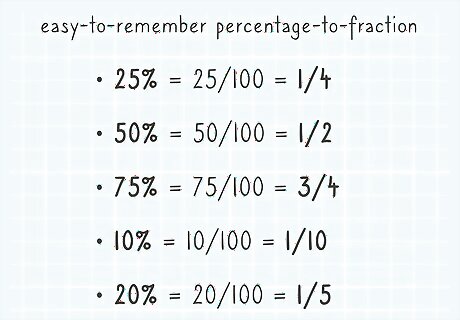
Show students easy-to-remember percentage-to-fraction conversions. Make a poster that shows a few easy conversions so that students can reference it quickly. Tell them to use it to quickly solve problems. For example, if students need to find 25% of a number, they can reference the chart to see that this is the same as finding 1/4 of a number. This way, students will start to make the association between fractions and percentages. This can also be a good reference for older students. You can include: 25%=25/100=1/4 50%=50/100=1/2 75%=75/100=3/4 10%=10/100=1/10 20%=20/100=1/5
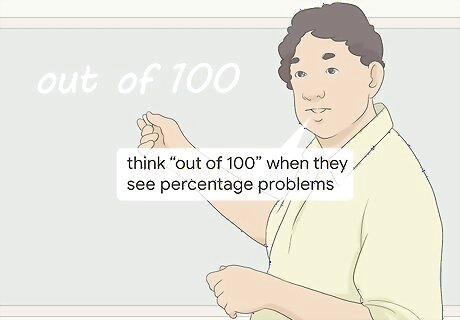
Tell students to think "out of 100" when they see percentage problems. When students see percentage in a word problem, tell them to immediately write the number as a fraction out of 100. Students are often used to having 3 numbers to work with to find a fourth. Writing a percentage as a fraction will give them another number to work with. For example, if a word problem asks students to find out what 60 percent of 20, they will immediately write 60/100. This is a strategy that is helpful for middle school students (around ages 10-13).










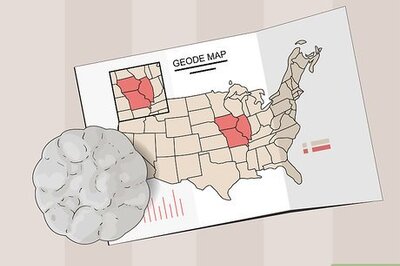



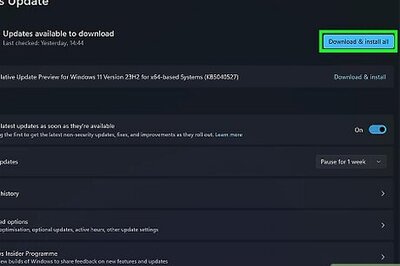
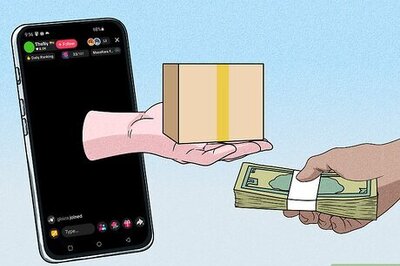



Comments
0 comment